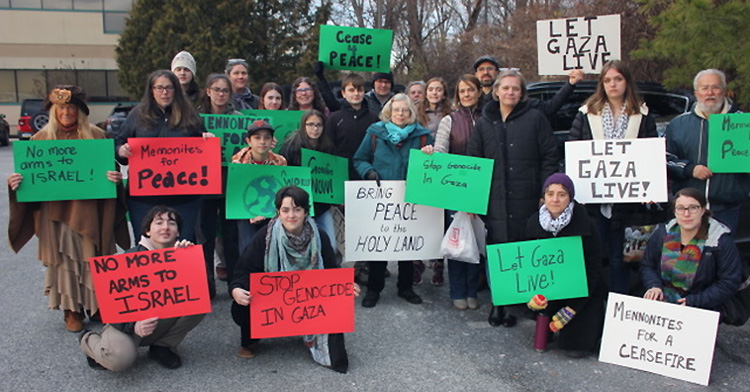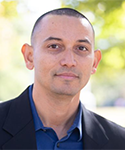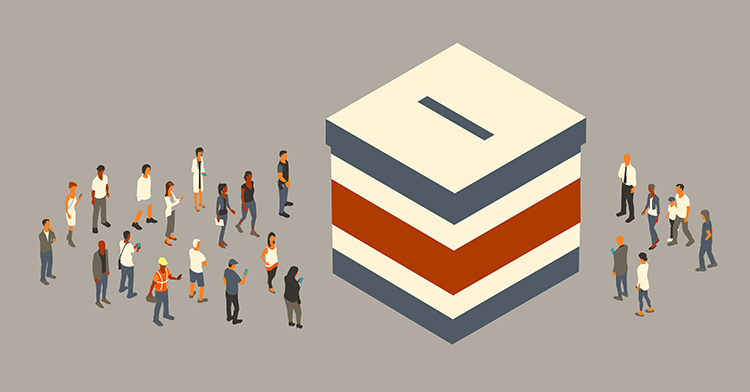Organizing in the Greenpoint/Williamsburg section of Brooklyn changed Gerald Taylor’s life.
As a black community organizer working in predominantly white, working-class neighborhoods, he saw for the first time how a multiracial and multiethnic coalition could get things done.
“[The coalition] fought to integrate a school. It fought the banks against redlining of their communities. It took on the city around abandoned buildings,” he said.
More than just accomplishing the neighborhood goals, Taylor said, the experience taught him how much relationships matter -- in this case, the connections between almost 100 groups, representing Latino, black, Polish, Irish, Italian and Jewish interests.
“I learned so much about the nature of relationships and how people change because of your relationships with them,” he said.
One of the important features of his approach was to recognize the church as a fundamental institution in people’s lives.
“The church is one of the few institutions that people still owned, controlled, and believed in and supported,” he said.
 For 50 years, Taylor has built relationships to bring people together -- starting as an NAACP youth leader at age 17, then in a 35-year career as a community organizer with the Industrial Areas Foundation (IAF), an international network of faith and community organizations that supports local organizing projects.
For 50 years, Taylor has built relationships to bring people together -- starting as an NAACP youth leader at age 17, then in a 35-year career as a community organizer with the Industrial Areas Foundation (IAF), an international network of faith and community organizations that supports local organizing projects.
In 2015, he co-founded Advance Carolina, a statewide organization in North Carolina focused on progressive and African American voters. Currently, he teaches community organizing at Garrett-Evangelical Theological Seminary, where he serves on the board of visitors for the Center for the Church and the Black Experience. He also works with his wife, Phyliss Craig-Taylor, doing political consulting and training.
Faith & Leadership communications intern Cameron Rogers talked with Taylor while he was visiting Duke to speak about organizing at the intersection of churches and other civic groups. The following is an edited transcript.
Faith & Leadership: You are described as a creative organizer and a strategic campaign planner. How did you get started in this work?
Gerald Taylor: It begins back in the early ’60s. I grew up in Harlem. There was organizing going on in Harlem at that time, and I got involved with Harlem CORE, the Congress of Racial Equality. And then one of my friends said, “Why don’t you come over to the NAACP Youth Council meeting?”
That Youth Council was where I began to learn politics. I became very active in the association and was elected state president when I was 17. And by being state president of the Youth & College Division, it gave me tremendous access and opportunity to organize -- learn how to organize -- and so we built a very powerful division of the NAACP that was quite aggressive, radical in terms of its politics. We had relationships with folks in SNCC [the Student Nonviolent Coordinating Committee] and SCLC [the Southern Christian Leadership Conference]. And so that was the beginning.
Community organizing became involved in it when [Saul] Alinsky, who founded the IAF, was organizing in Rochester, New York, and in Buffalo. I was curious about Alinsky but did not connect with his work until later, until the ’70s, when I was looking to do some more organizing after coming out of the [civil rights] movement.
I started organizing in North Brooklyn in the Greenpoint/Williamsburg area. I focused on working-class Polish, Irish, Italians, Hasidic Jews, a small Latino population that was growing, and the African American community.
The whole story of Greenpoint/Williamsburg during this period was the building of a deep, multiracial commitment to one another, and it changed my approach to organizing.
I was known nationally at that point as the only black organizer that organized working-class whites. So that was the beginning.
In organizing, the idea was always to kind of force [interactions], if you will. This negotiation had to be real, had to be between real people.
My organizing life has convinced me that that’s not impossible; that a black man could go to a Polish neighborhood on the north side of Brooklyn, meet with a guy at night in his grocery store and say, “Hi, I’m Gerald Taylor.”
And he said, “Why are you here? You’re either crazy or some kind of organizer.”
And I said, “Both.”
We laughed. We talked. He trusted me as we began to talk about strategy. He invited me to the leadership meeting on the Polish north side as they were fighting to keep their firehouse open.
These were veterans of World War II, the Polish resistance. These were fighters, tough men and women. I fell in love with working with them.
And we win the firehouse fight on the north side and the bell rings when we celebrate the victory and my name is mentioned as one of the people that was an important part of the struggle.
F&L: What is the key motivation in your work?
GT: As a young black man growing up in Harlem and coming South, I always had the attitude that I was not inferior to any white person. My mouth got me into a lot of trouble, because I would stand up for myself in those tense environments.
A very deep belief in the integrity of my own personhood and black folks not being inferior was the motivation for me to get involved in the movement.
That belief and fundamental integrity -- believing that a democracy has certain elements to it that must be fought for and sustained over time for it to succeed -- that’s been the driving force of my life.
F&L: Would you consider yourself a person of faith?
GT: That’s a very interesting journey. My family, my mother’s side, is from North Carolina -- Elizabeth City. So when I was a child, we would come down and I’d work on the farm.
I was not churched when I was younger except when I went South, where my grandmother insisted upon us going to church and going to midweek services. So when I was down South, I was in the Baptist church. There was no way out of that.
I was skeptical of the church. I was skeptical of its commitment to organizing at that time.
In my senior year in high school, I read “The Brothers Karamazov” by Dostoevsky, and there is the chapter called “The Grand Inquisitor.”
In it, the story is that Jesus has returned to the earth and is meeting with a senior official of the Catholic Church, and he confronts Jesus and asks, “Why did you come back? You’re going to mess this all up. We have it under control.”
It’s this brilliant one-way conversation, because Jesus never speaks. The bishop is arguing that Jesus came back at the wrong time. Jesus plants a kiss on him. [Then the bishop tells him to leave, though he’d intended to execute him.]
This story struck me so powerfully -- the debate, the argument that was being raised about what religion had done since Jesus had left.
Now, that doesn’t mean I didn’t have faith. The question was church and my experience with church.
F&L: When did you come to terms with your own spirituality?
GT: It was not until I started organizing in Brooklyn and then with the IAF. The IAF’s whole focus was on organizing churches, so I had to come to terms with that.
I realized that if I was honest with the pastors I met with, it was fine that I was still skeptical. I was still on a journey, and I was curious. So every pastor, I would ask them about their church, their theology and traditions.
I would go visit during worship services. I’d spend time with the pastors and help them think about their organizing that they were trying to do in the church.
My own commitment to becoming literate in different traditions helped with understanding my own spirit. My work made it possible for me to interpret and learn from different traditions. I was deeply immersed in that. I was becoming steeped in every religious tradition.
My work gave me a deeper appreciation for the multiple traditions, multiple interpretations. It wasn’t until I was in Baltimore with the IAF that I joined the Baptist church and was baptized and became active in the church.
F&L: Why do you feel it’s important for community organizers to work with religious leaders and organizations?
GT: Let me clarify the distinction I make in terms of traditionally how the church has been viewed in organizing and movements.
The church per se, as an institution, was not what connected to the movements and to organizing, usually. It was the pastor. It was a couple of members of the church who may have been active in civic activity -- maybe the NAACP or a union or whatever their connection was.
The movements, union organizing and political organizing stuff always went to the church -- the liberal church -- because it had organized people, and money. But there was no relationship between church and organizers. It was transactional. When the movement was over or when the political election was over, organizers walked away from the church and away from the community.
What the IAF did, which was fundamentally different, was say we could not organize that way, because the church is a fundamental institution in the lives of people and communities. If we were going to build a powerful citizens’ organization in that community, it had to be built on institutional strength.
So our investment was to build the institution, because if the institution was built and stronger, then the organizing work that we would do would be deeper, stronger and last longer.
Our first work was the relationship with the pastor of a congregation or the rabbi or the imam. That meant getting to know who they were, what their hopes were, how they came to ministry, why this place, and what are they attempting to do.
On the basis of that, we began to plan and think through together how to do that. Our investment was in the church and its people and its aspirations, which was fundamentally different from how other organizing had approached the church. This made a difference.
That’s how we were able to build very large church-based, congregation-based organizations anywhere in the country -- in rural areas, in red states, blue states.
I was the first to do broad-based organizing in the South, beginning in 1986, where we started to work in Memphis, and then in North Carolina, where we eventually built five organizations; about 250 congregations were part of that effort.
So that was the distinction; the difference was we invested in the institution.
F&L: What are some steps that you think liberals could take to invest in the church?
GT: It's not just the church. It's the union. It's the association. It's the farmers’ co-op. It’s all those local people's organizations that have been undermined, have lost strength, and have not been invested in by the so-called progressive community.
F&L: How do you change that?
GT: I’m an adjunct professor at Garrett Seminary. The students don’t get taught practical skills of what do you do the first day you arrive at a church. They get taught theory and theology.
Part of my mission at the school has been to teach the elements of organizing, because understanding the art of organizing is understanding the order of relationship, understanding power and how it’s organized, how institutions work and don’t work, how do you move people from one place to a new place.
So I think the challenge is that the culture of the liberal church has to be adjusted toward a new kind of institutional understanding of its work and what it does -- not simply the pastor and a few members of the social justice committee who go out while the rest of the church says, “That’s fine, but that’s not us.”
The name of the course I teach at Garrett is “What Does Community Organizing Have to Do with Jesus?” Because if you can’t answer that question, people are not going to participate in organizing.
F&L: How do you answer that? What does community organizing have to do with Jesus?
GT: In almost all the [religious] traditions, the idea of liberation and freedom is central, the idea of justice.
And so the question is, What does a just life mean in your tradition? What does it mean to say, in the case of the Christian tradition, that you are a saved person?
To be a saved person, if it is to mean anything, means that you have been liberated. You’ve been given a gift, and that gift has liberated you to go into the world and to be different and to transform the world into a place of justice.
There tends to be a liberal pole and then there tends to be a very conservative pole in almost every religious tradition, and these poles look at each other and say, “You’re not the church, you’re not the church; our interpretation is the only interpretation.”
F&L: How does this relate to our political situation today?
GT: I do know these two interpretations of the world are clashing with one another. It’s not as deep as the split between slave and nonslave state, but it’s deep, and it’s creating two fundamentally different countries.
No place is impossible to organize if you are committed to the idea that you are going to engage people where they are. You’re going to listen to them. You’re going to wrestle around their hopes and aspirations and their vision and what their faith says to them and say, “OK, there may be a way we can do this together. Have you ever thought about this, this way?”
And when they’re sitting down and they’re looking at me -- a black guy talking like this and listening to them this way and understanding them -- the stereotypes begin to move a little bit.
And it will not happen in every place, but I’m arguing that if we’re not willing to go there, if we’re not willing to challenge these places and push and agitate and move around and do this, we will not get the change that’s necessary to keep our democracy whole.






